Affiliate links on Android Authority may earn us a commission. Learn more.
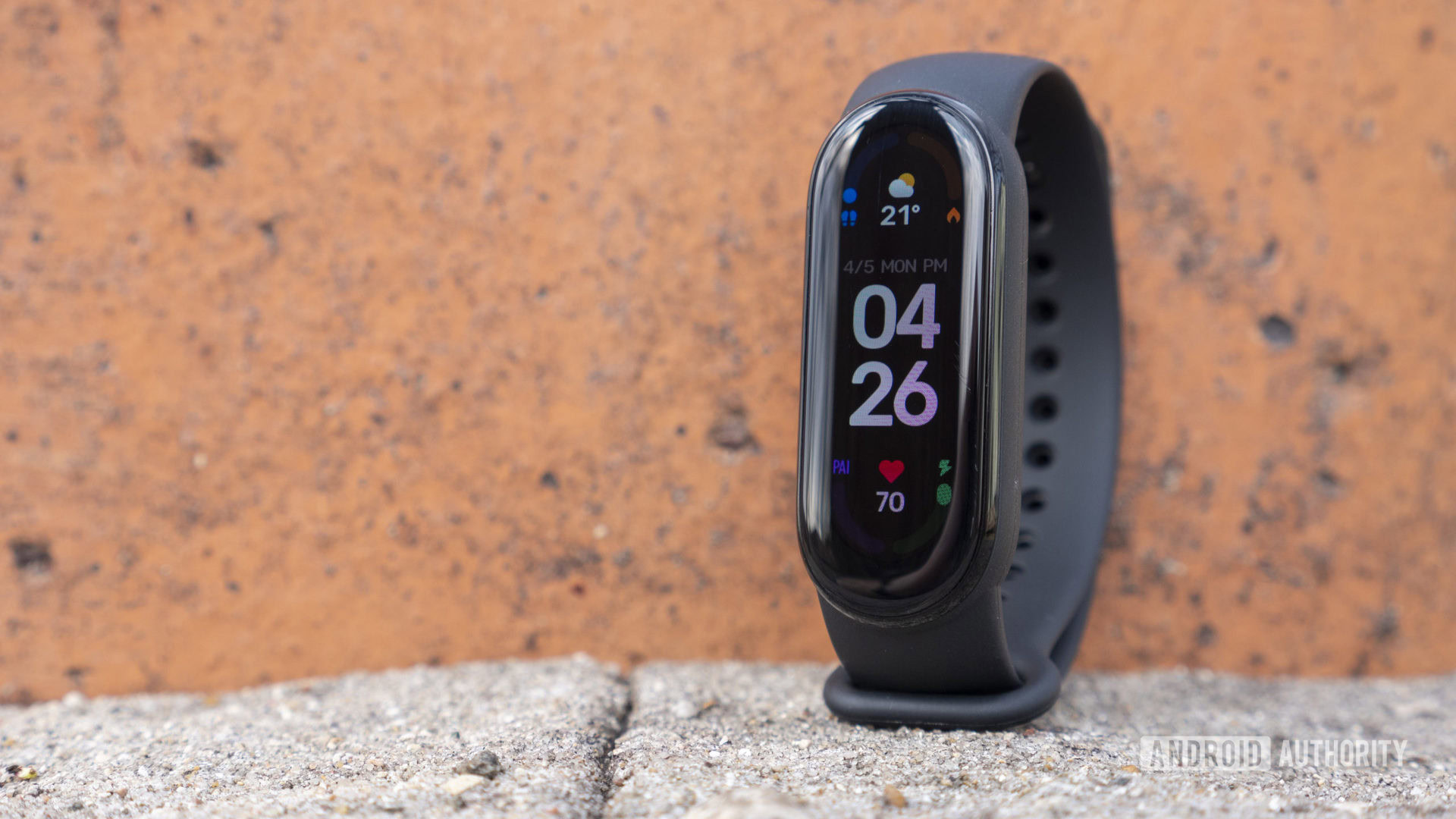


Xiaomi Mi Band 6
What we like
What we don't like

Xiaomi Mi Band 6
Each year, Xiaomi adds a handful of new features to its Mi Band line. And each year, the company is able to keep its cost down under $50. The Xiaomi Mi Band 6 is no different, gaining modern features like a bigger display and blood oxygen tracking. But other competitors are catching up to Xiaomi’s lead in the sub-$50 fitness tracker space, sometimes offering more for the price. Read our full Xiaomi Mi Band 6 review to see if this is the cheap fitness tracker you’re looking for.
Update, May 2023: This Xiaomi Mi Band 6 review has been updated with new alternatives and competition.
What you need to know about the Xiaomi Mi Band 6
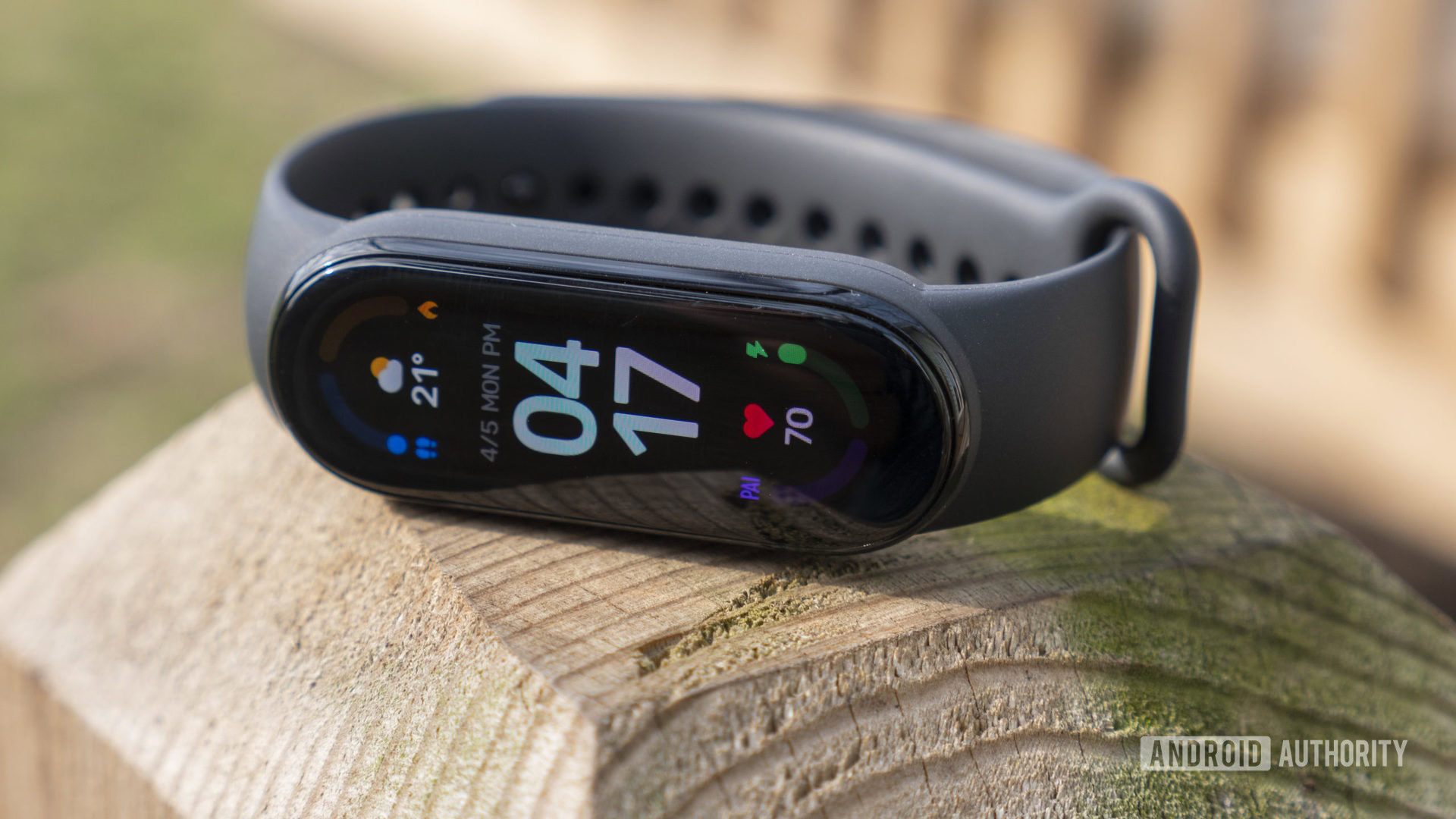
- Xiaomi Mi Band 6 (global, no NFC): $49.99 / £49.99 / €44.99 (~$53)
- Xiaomi Mi Band 6 (China, no NFC): 229 yuan (~$35)
- Xiaomi Mi Band 6 (China, NFC): 279 yuan (~$42)
The Xiaomi Mi Band 6 (aka Xiaomi Mi Smart Band 6 in some regions) is Xiaomi’s flagship fitness tracker for 2021. True to form, the Mi Band 6 offers more features than you’d expect for a sub-$50 wearable.
New features include a bigger AMOLED display, more than double the activity tracking modes, blood oxygen monitoring, and breathing quality assessments during sleep. Those features alone may not make existing Mi Band 5 (or even Mi Band 4) users want to upgrade, but they may be just enough to get people to consider Xiaomi’s offering over the cheapest Fitbit.
However, Xiaomi’s Mi Bands are no longer shoo-ins for the best cheap fitness tracker crown. That may have been the case for the last few years, but now companies like Amazfit offer alternatives to the Mi Band that can also deliver on the basics.
Xiaomi sells two versions of the Mi Band 6 in China: one with contactless payments and Xiaomi’s Xiao AI voice assistant, and another model without those two features. Unfortunately, the global model misses out on those features too.
The Mi Band 6 is available to buy in Europe and other regions around the world. While it isn’t officially available in the US that shouldn’t stop you from importing one from an international retailer like Amazon. Where it is available, it comes in six colorways: Black, Orange, Yellow, Olive, Ivory, and Blue.
Its successor, the Mi Band 7, is now widely at retailers available across several regions, while the Mi Band 8 is only available in China.
Design: Same ol’ same ol’
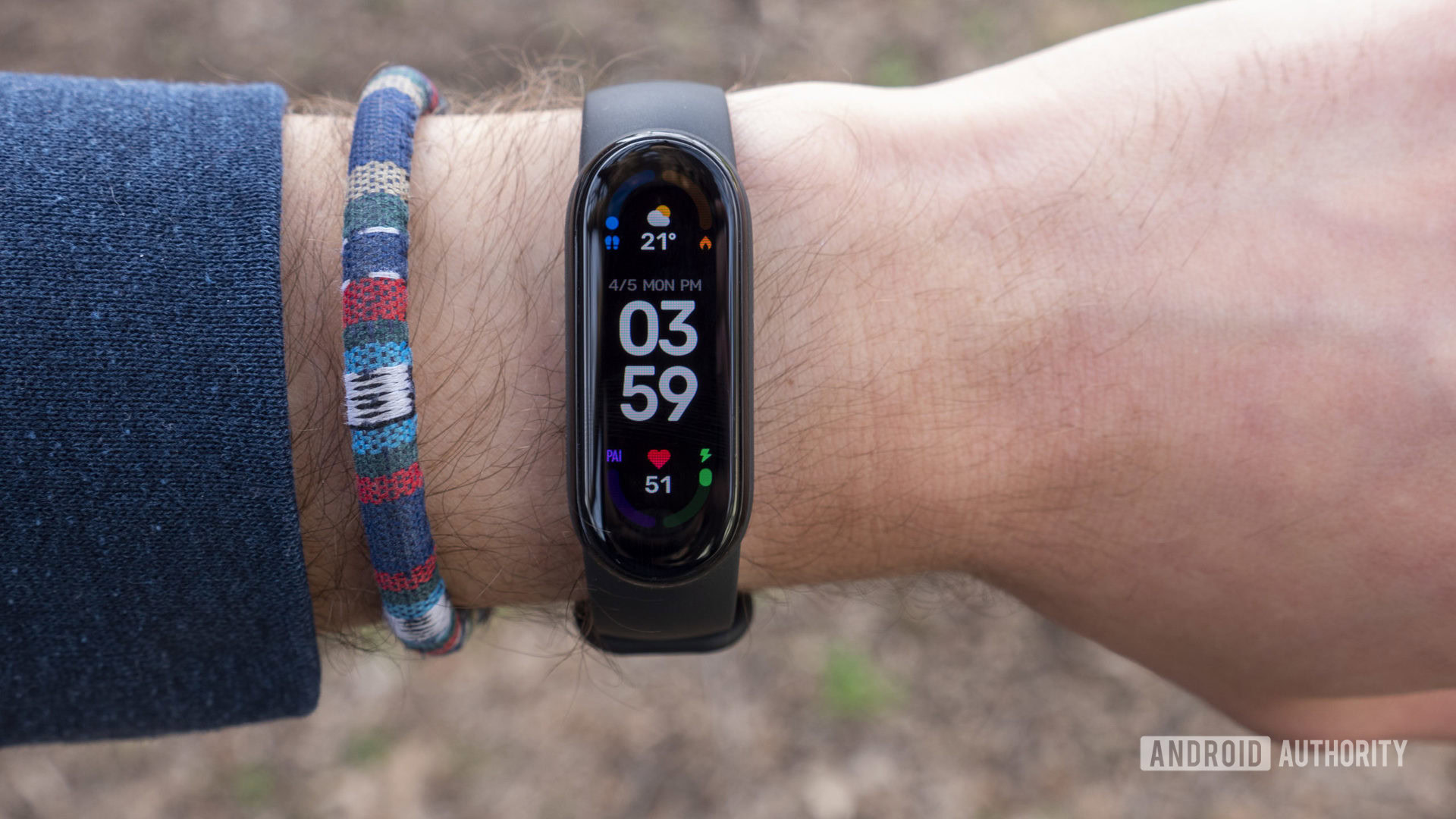
The Xiaomi Mi Band 6’s design is essentially unchanged from the previous two generations of Mi Bands. It’s made of a small tracker module that fits into a thin silicone strap. The black model of our Xiaomi Mi Band 6 review unit isn’t all that eye-catching, but there are plenty of third-party options available around the internet.
The Xiaomi Mi Band 6's design is essentially unchanged from the previous two generations.
The strap that comes with the Mi Band 6 feels okay. It’s soft and doesn’t collect dust or hair, which is always a win. I’m not a huge fan of the pin-in-hole buckle, but I know many people prefer them. Also, the Mi Band 6 works with Mi Band 5 bands (and vice versa). So, Mi Band 5 owners can use their existing straps if they upgrade to the 6.
The one big improvement on the design front is the upgraded display. The Xiaomi Mi Band 6 boasts a much larger 1.56-inch AMOLED display, which is 50% bigger than the Mi Band 5’s 1.1-inch screen. The display nearly spans to the edge of the case and makes the fitness tracker look much more modern.
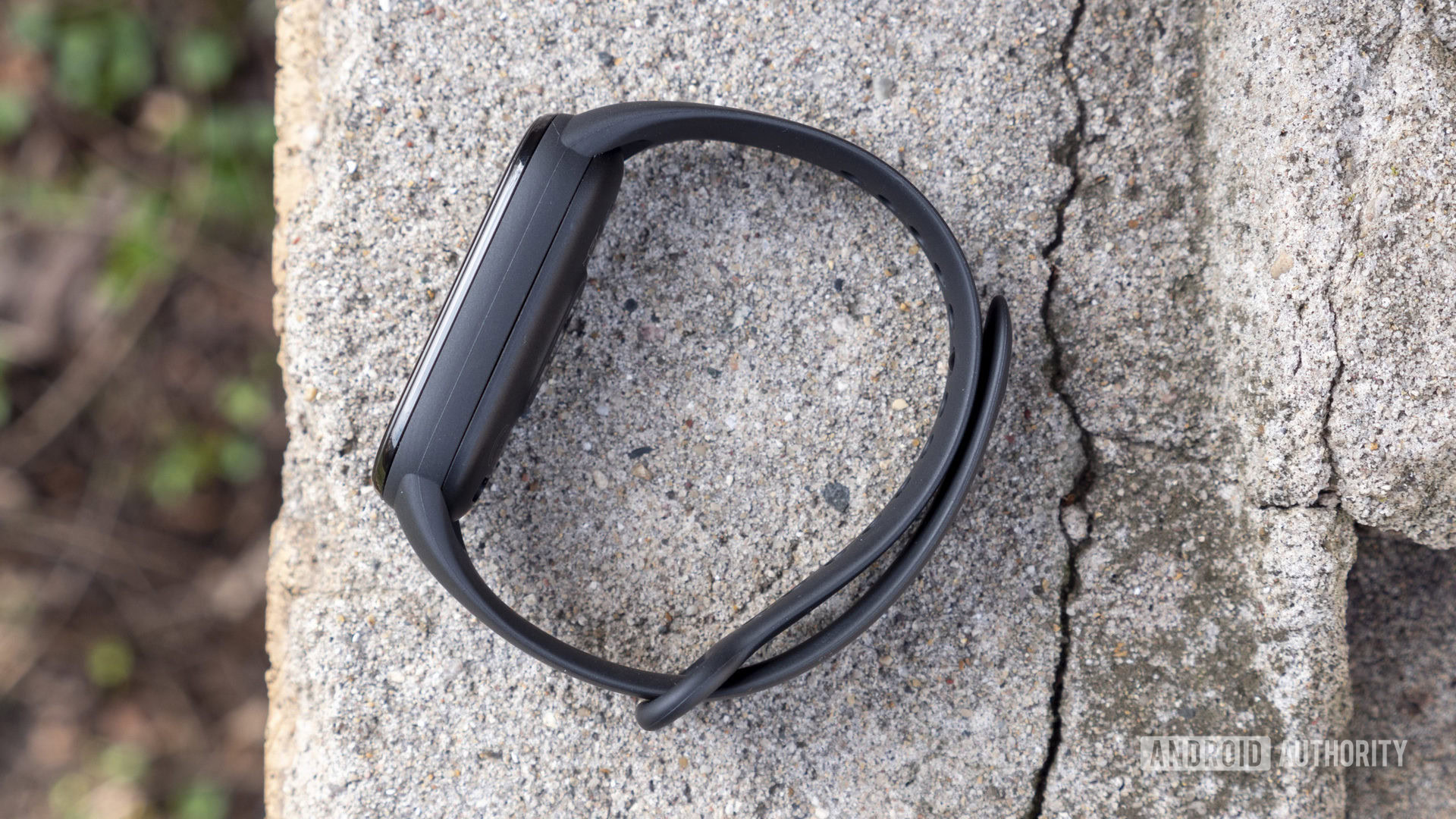
Unfortunately, there’s no ambient light sensor. The display gets plenty bright, even when viewing it outdoors in direct sunlight. Still, you might find yourself manually adjusting the display brightness if you’re transitioning between darker and lighter environments.
There are well over 100 watch faces available for the Mi Band 6. Fewer than 10 are customizable, and the majority of the watch faces are themed with cutesy anime characters. Honestly, I really struggled to find a watch face that wasn’t tacky.
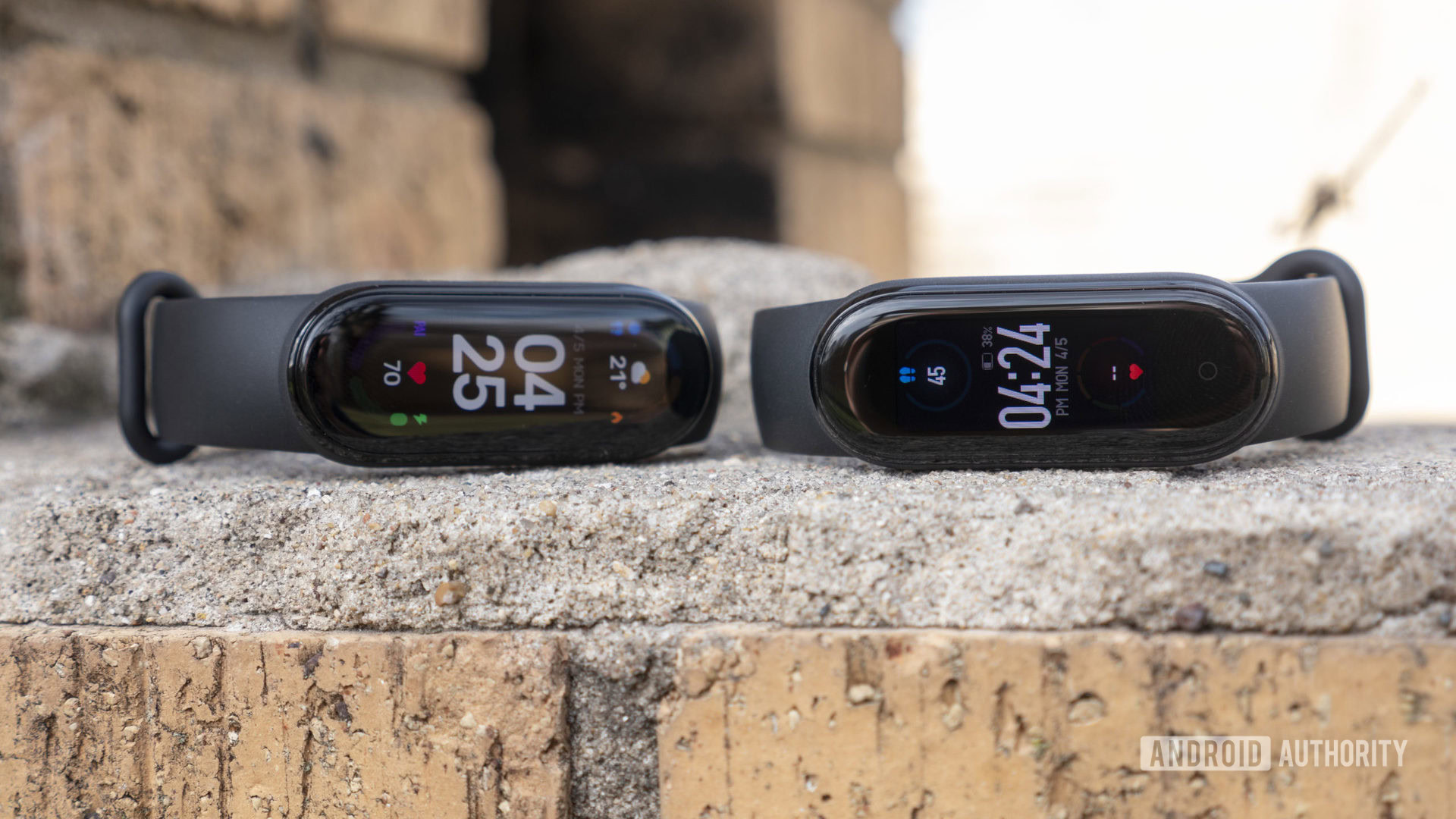
Battery life is never an issue for Mi Bands, and that’s also true for the Mi Band 6. Xiaomi claims the fitness tracker can last 14 days on a single charge with “normal” usage. That’s certainly possible if you’re only using the most basic functions, but it hasn’t been my experience.
Many of the Mi Band 6’s features drain the battery quickly. Turning on Xiaomi’s new breathing score feature, all-day stress monitoring, or increasing the frequency of resting heart rate readings all affect battery life and don’t constitute “normal” usage. This is a review, so I had all those things turned on. Realistically, I’d say most people will be able to get just over a week out of the Mi Band 6’s battery if they plan on using all the new features.
Health and fitness tracking: Fine for daily activity tracking
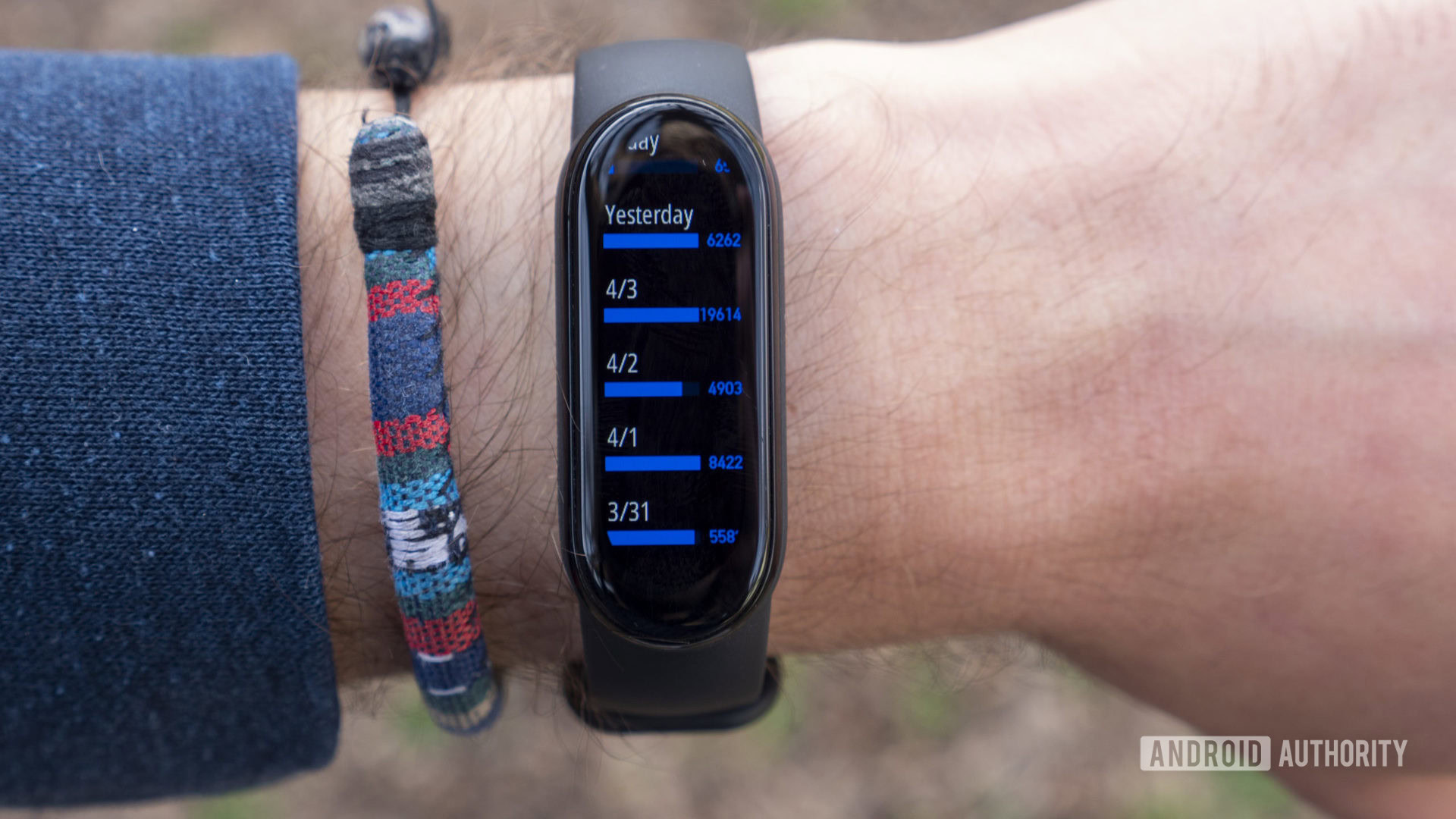
The Xiaomi Mi Band 6 is a fitness tracker that excels at the basics.
The Mi Band 6 will track your steps taken, calories burned, distance traveled, resting and active heart rate, and sleep throughout the day. There’s no standalone GPS, though there is connected GPS if you don’t mind bringing your phone with you while you’re out exercising. Step tracking and calorie burn were both in line with what comparable wearables from Fitbit and Garmin reported. Heart rate tracking is another story.
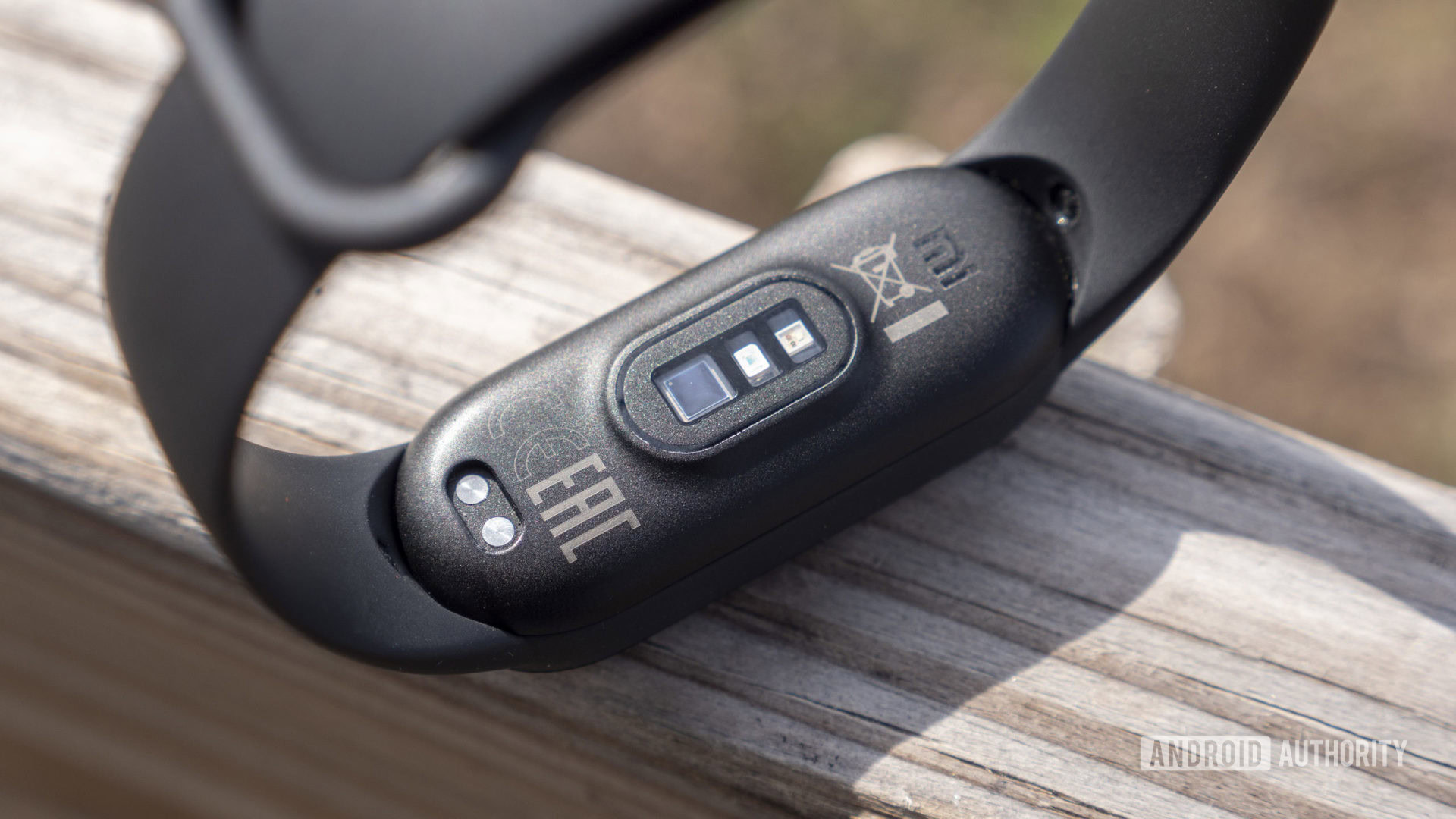
The Xiaomi fitness tracker reports resting heart rate readings in 30, 10, 5, or 1-minute increments. Monitoring every 30 minutes will be the best for battery life but will get you the spottiest data. Monitoring every minute will give you the best overall picture at the expense of battery life. To play it a little safe, I set mine to monitor every five minutes. If you want truly all-day heart rate monitoring, you might want to consider a fitness tracker from Garmin. Most Garmin fitness wearables record every few seconds throughout the day.
Like its predecessor, the Mi Band 6 can warn you if your heart rate increases over a certain threshold during periods of inactivity. I’ve personally never had issues with this, but the option is there if you need it.
Resting heart rate readings were fine when tested against the Garmin Forerunner 245 Music and Wahoo Tickr X chest strap. At various times throughout the week, all three heart rate sensors reported within 5bpm of each other.
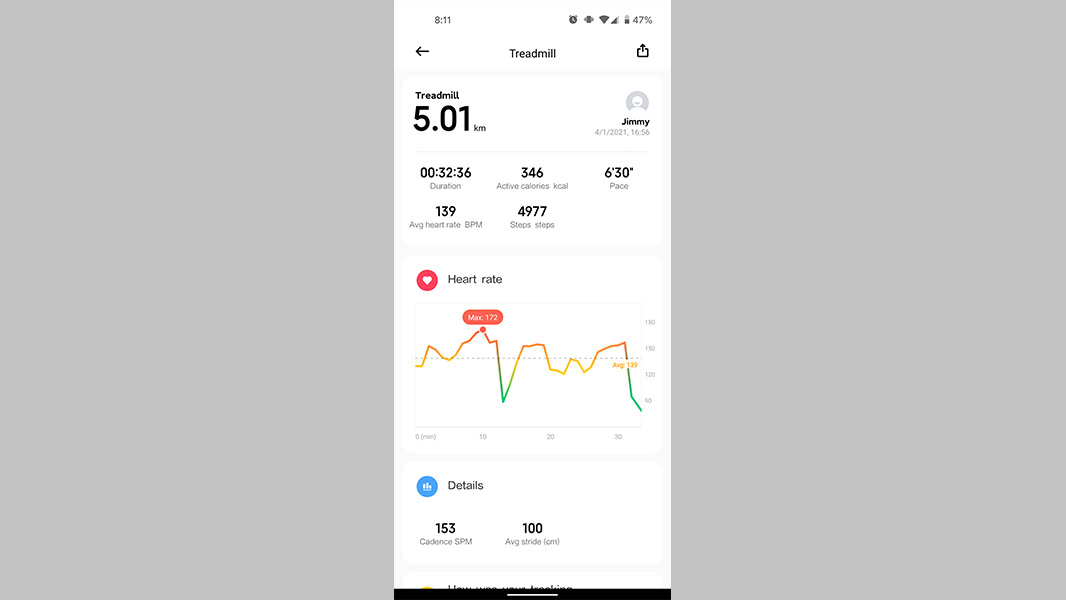
I’ve found the Mi Band 6’s “sweet spot” to be anywhere from 90-140bpm during workouts. Anywhere above or below that range and the tracker starts to go off the hinges. A recent 5K treadmill run (screenshot above) showed my heart rate peaking at 172bpm at the ~10-minute mark, even though my Wahoo Tickr X (2020) chest strap reported 139bpm at that time. That’s a huge difference, and unfortunately, not a one-off event. That entire run, the Mi Band 6 reported my heart rate to be above 150bpm at various times, while my chest strap was only peaking at ~140bpm.
Most people buying the Mi Band 6 will likely only want to keep general tabs on their general fitness trends and daily activity, and I think the Mi Band 6 would be fine for that. If you really want to dig into your workout data (and have reliable data overall), I’d recommend you choose another fitness tracker.
The Mi Band 6's heart rate sensor is fine for keeping tabs on your daily activity, but not much more than that.
One major improvement over the Mi Band 5 is the number of sports profiles available. The Xiaomi Mi Band 6 can track 30 activities, up from 11 on the Mi Band 5. Niche profiles like Zumba, kickboxing, and badminton have been added to the tracker this time around. It can also automatically detect six activities: running, walking, treadmill, cycling, rowing machine, and elliptical. For all other activities, you’ll need to select it on the device and hit start manually.

Blood oxygen monitoring has been an increasingly important metric in fitness trackers lately. Xiaomi included an SpO2 sensor on the global Mi Band 6, allowing you to spot-check your blood oxygen levels throughout the day. The Mi Band 6’s SpO2 sensor is actually better implemented than the Xiaomi Mi Watch‘s sensor, which is quite surprising.
It only takes a few seconds for the Mi Band 6 to record your blood oxygen levels. It’s quite a bit faster than my Forerunner 245 at taking readings, too. Once you get a reading, it’ll hopefully show a percentage somewhere between 95-100%. I tested the Mi Band 6’s numbers against the Forerunner 245 Music and a reliable fingertip pulse oximeter, and all three devices showed nearly the same results.
Again, it only works with spot checks throughout the day, so the Mi Band 6’s sensor won’t run at night to monitor for potential sleep apnea signs. This is where SpO2 sensors are most useful in fitness trackers, but you usually need to pay up for a device that tracks blood oxygen at night. Xiaomi clarifies in its press materials that the Mi Band 6’s SpO2 readings “should not be used or relied on for any medical purposes. All data and tracking should be used for personal reference only.”
SpO2 spot checks are an important feature to have if you struggle with your blood oxygen numbers, but most of us will use this feature a handful of times and leave it be.
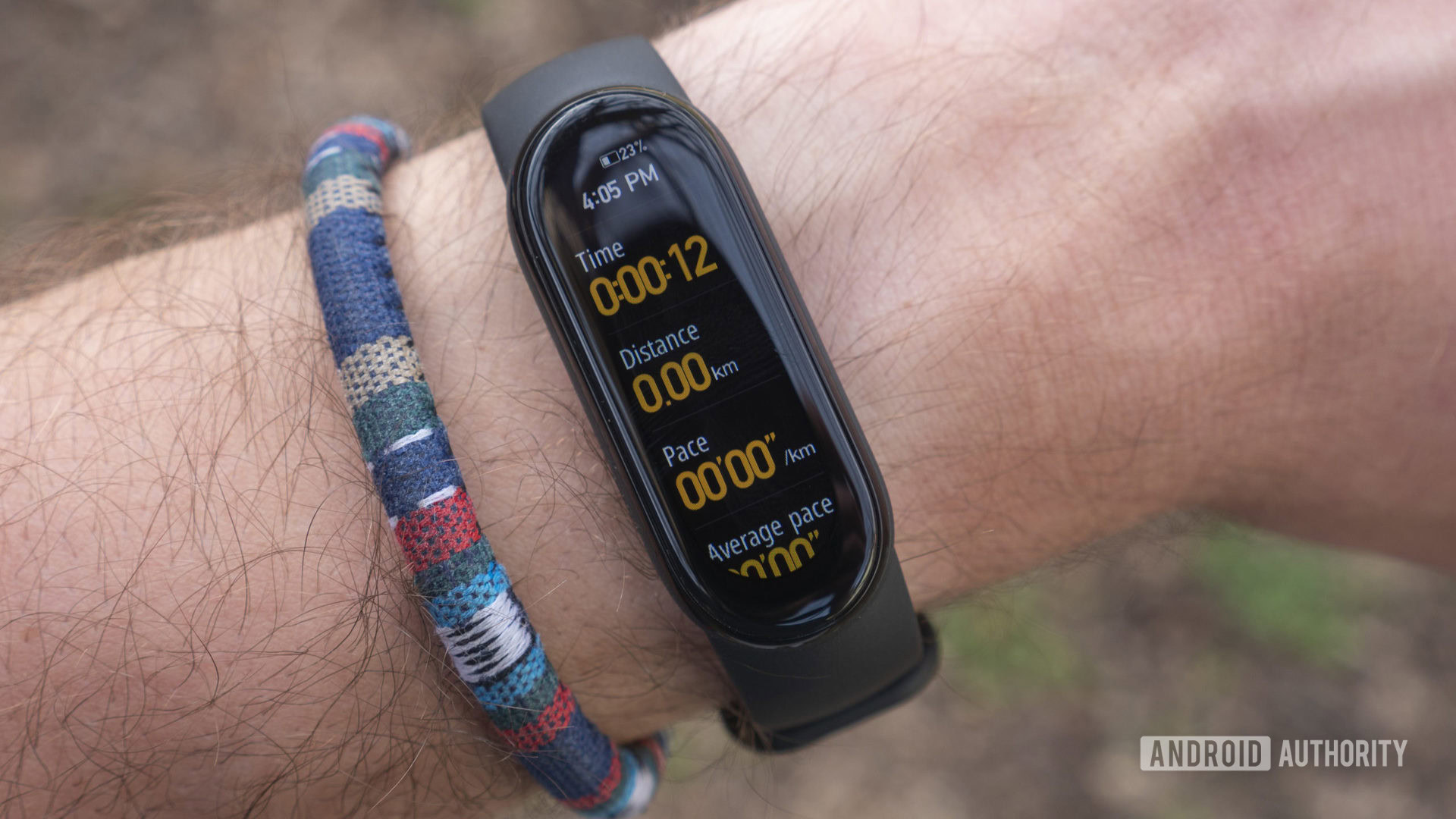
Menstruation cycle tracking is back with the Mi Band 6, helping women track their cycle duration, ovulation, history, and also predict when their next cycle will happen. You’ll need to enable this feature if you want to use it. Once set up, you can see a month-view calendar in the Xiaomi Wear app that shows your cycle and estimated fertile and ovulation windows.
What’s available in the Xiaomi Wear app seems okay, but it’s certainly not as fully featured as standalone period-tracking apps. It’s also a bit of a step down from what Xiaomi used to offer in Mi Fit, where you could record moods and symptoms for each day of your period, though you can still access all of those features in the Zepp Life app instead — we’ll get more into this strange situation in the next section.
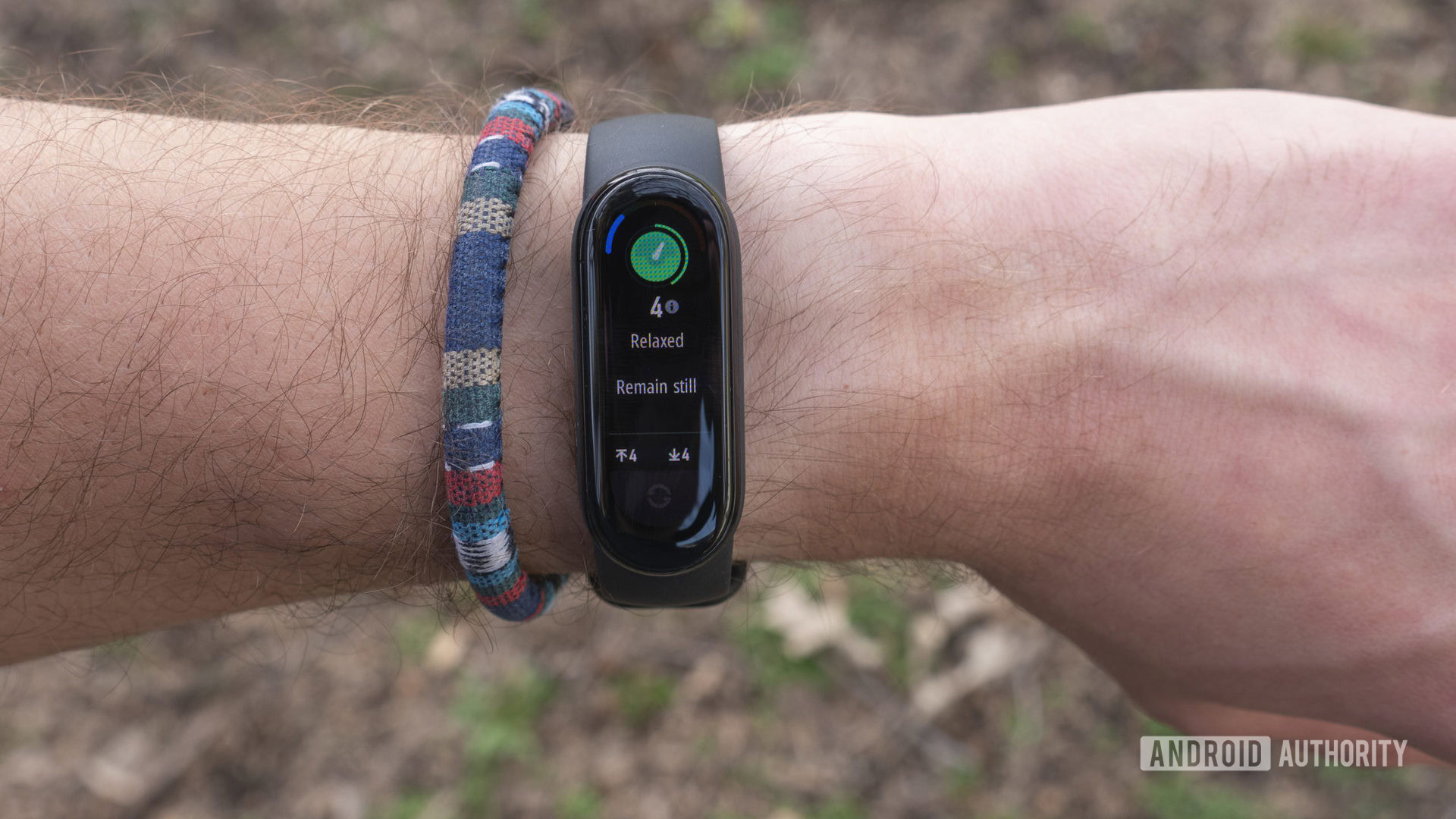
The Xiaomi Mi Band 6 integrates PAI (Personal Activity Intelligence) metrics to give you a better idea of your heart health. You’re given a PAI score, and any activity you do throughout the day adds to that score. Higher-intensity workouts that keep your heart rate high add the most points to your PAI score. The goal is to keep your score over 100 to improve your cardiorespiratory fitness.
It’s a unique metric that attempts to help you understand how your activity reflects your overall health. It forgoes the simple step count to gauge your fitness level, which Fitbit’s Active Zone Minutes and Google’s Move Minutes and Heart Points also do.
I wish the point system were a bit clearer; I think the more direction you can provide users with this type of thing, the more they’ll get out of it.
The Xiaomi Mi Band 6 can keep track of your sleep duration, stages (light, deep, and REM), sleep breathing quality, and naps throughout the day. It’ll also give you an overall sleep score from 1-100. Sleep tracking is normally one of the Mi Band’s strong suits. However, I’ve had some difficulties getting the Mi Band 6’s data to line up with other sleep trackers.
One night, in which I achieved a good 93/100 score, the Mi Band 6 didn’t record any REM sleep or periods of being awake. In contrast, my Fitbit Sense said I was awake for 41 minutes and had over 1.5 hours of REM sleep. My Google Nest Hub (2nd gen) also told me I had a particularly restless night, causing me to doubt the Mi Band’s data.
This wasn’t an outlier, either. On another night of particularly poor sleep, my Fitbit Sense and Google Nest Hub both told me I was restless all night. Even though the Mi Band 6 picked up on one time I was awake, it missed the other handful of times that the Nest Hub and Sense both caught. Furthermore, I woke up feeling groggy and tired, yet the Mi Band said my sleep score was 95/100. This number would have been much lower if the Mi Band caught all my sleep disturbances.
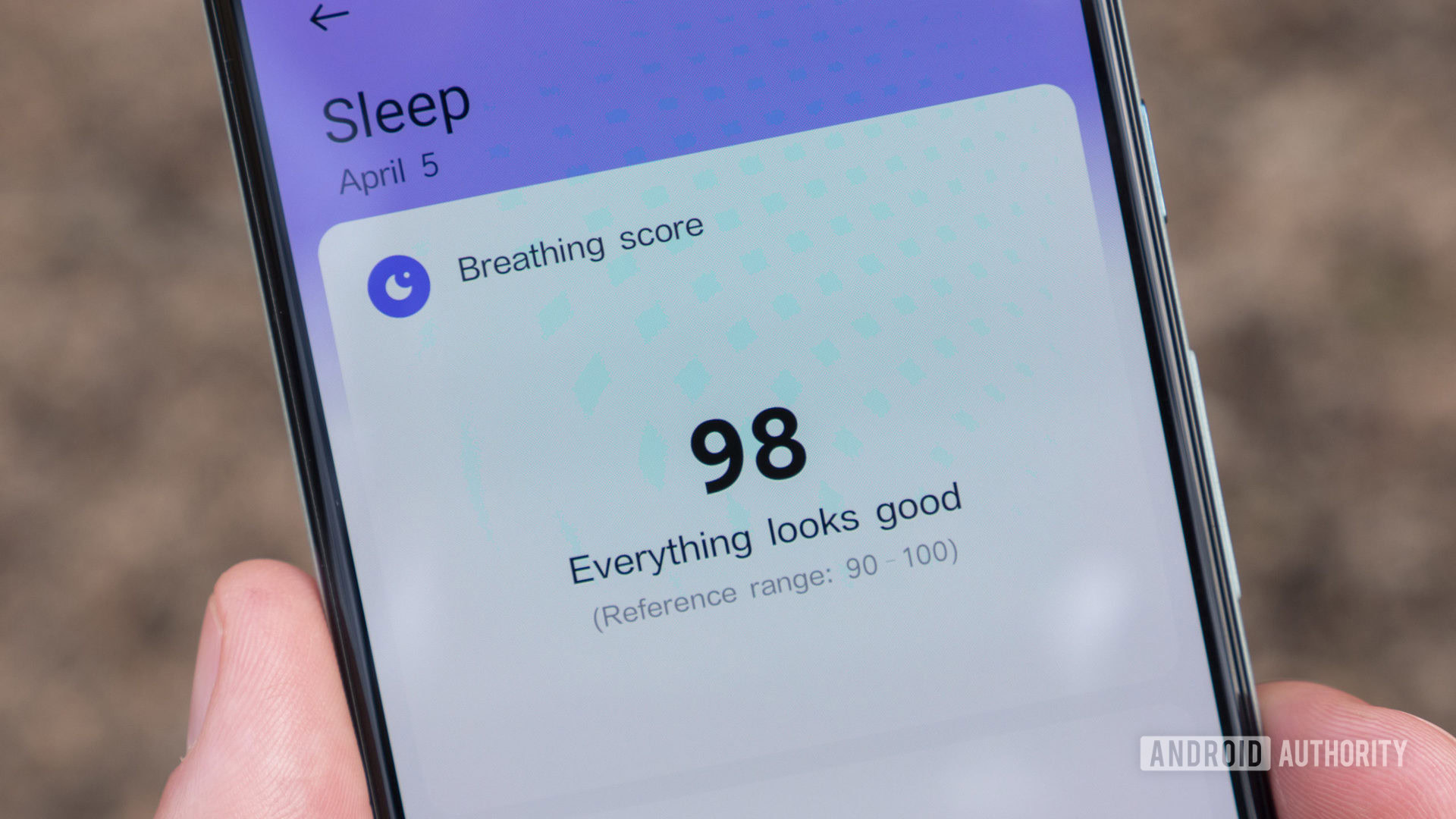
The Mi Band 6’s breathing rate tracking during sleep is quite basic. It gives you a score from 0-100 based on your blood oxygen readings at night. You’re given a brief overview of the feature in the Xiaomi Wear app, as well as some recommendations on how to breathe better. That’s really all the info you get, though. I’d really like to see why I scored a 96/100 on a certain night instead of just being given a score.
Mi Fitness and Zepp Life apps: It gets confusing
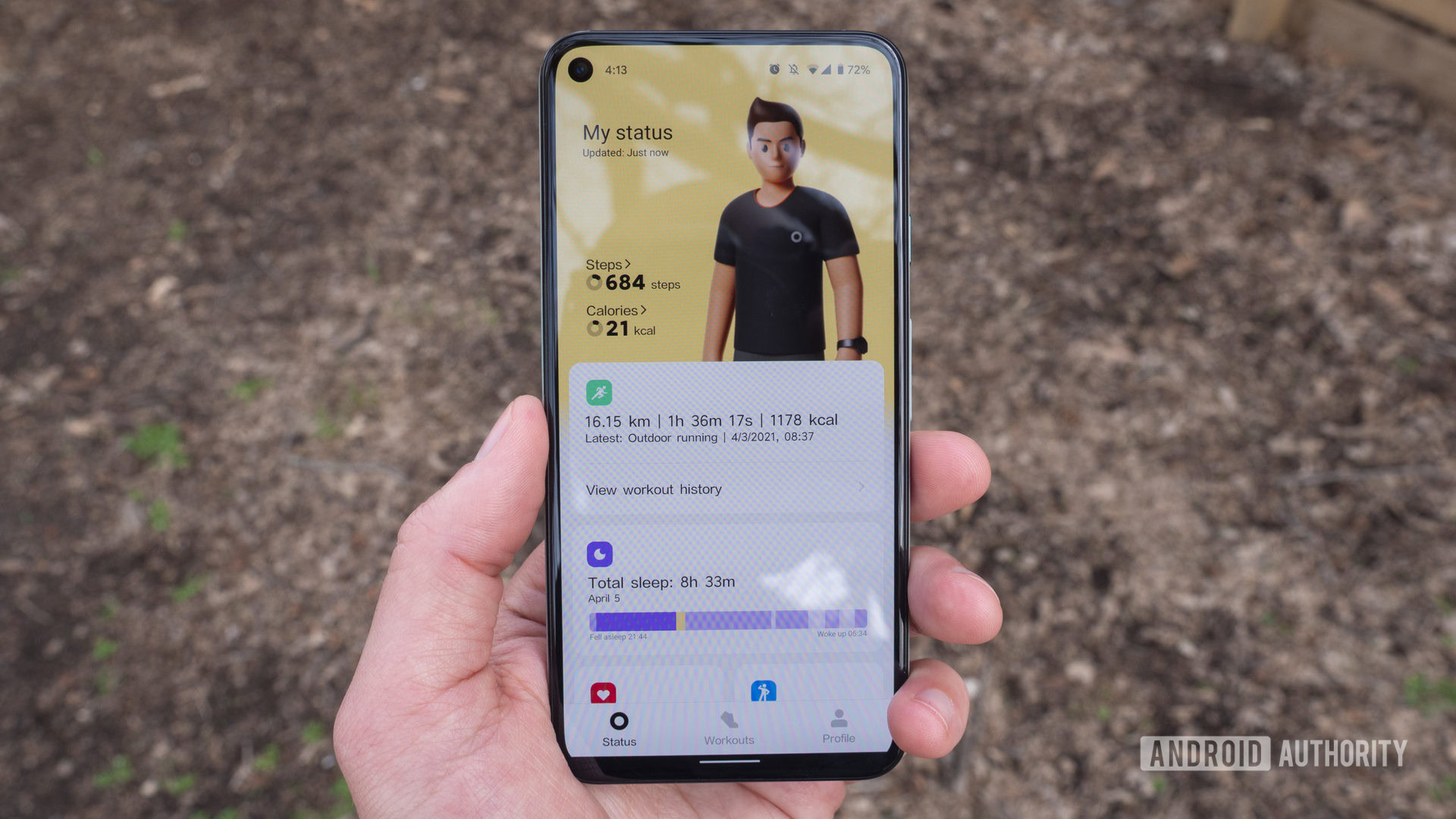
The Mi Fitness app (renamed from Xiaomi Wear in March 2022) is the app Xiaomi has talked up in recent times, so we’ll discuss that in greater detail here before addressing the Zepp Life situation.
You can use Mi Fitness to dig into all your fitness and health data. The app is split up into three tabs: Status, Workouts, and Profile.
Status is basically the home screen. It shows your recent activities, current step count, last night’s sleep, and any other health metrics tracked by the Mi Band. This page is quite simple and easy to navigate. The Workouts tab lets you start a workout of any type. You can view your real-time metrics from this screen, as well as a map of where you are. The Profile tab is a catch-all settings menu. Here, you can see device settings, change notification preferences, and more.
Mi Fitness is a step up from Mi Fit aesthetically. You can tell Xiaomi took the time to design the app with modern practices in mind, and later updates have made it look extremely Apple Health-esque. Unfortunately, the care that went into its aesthetics doesn’t transfer over to usability. I think the whole app could use some TLC.
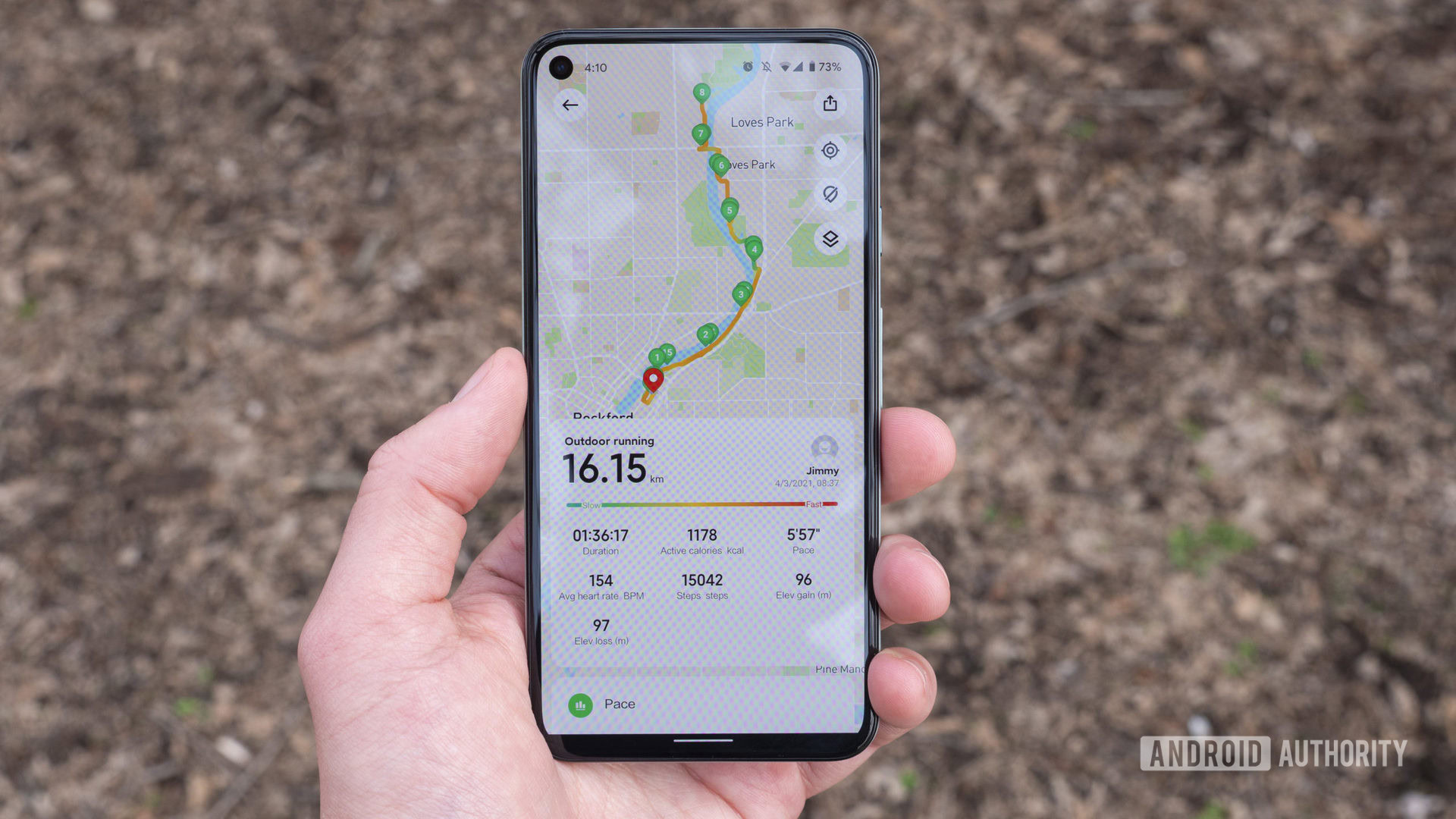
For starters, Mi Fitness can only connect to Strava as a third-party app, not Google Fit, or any others. You also can’t export raw data files. So, the data collected by your Mi Band 6 stays in Mi Fitness. That wouldn’t be a big deal if the app made it easy to see your data, but it doesn’t.
Take heart rate data in workout summaries, for instance. You’re given a graph that shows your max and average heart rate, but it doesn’t allow you to see anything else. You can’t tap on the graph to get an exact heart rate at any given time. I think this is too basic, even for the average user.
You can use the Mi Fitness or the Zepp Life app, but not both at the same time.
US users will also struggle with Mi Fitness if they’re used to the imperial system. Mi Fitness only supports the metric system. On top of that, there’s no 12-hour time support, and no Fahrenheit support.
The Mi Fitness app is a good start. It just needs polish. But here’s the weird part: if you miss the old Mi Fit app, it still exists, and it’s called Zepp Life. Confused? Well, the Mi Band 6 (like recent Mi Bands) is part manufactured by Huami (which is also Amazfit’s parent company). In the West, Huami goes by Zepp Health, which also makes its own wearables under the Zepp brand.
What all this means is you can happily access all of the older features — imperial measurements, better period tracking features, Google Fit support — and the older UI (though you still can’t manually export raw data). Users can also transfer all of their data from Zepp Life to Mi Fitness, but this is a one-way deal. It only works with historical data, so you can’t use both simultaneously. Notably, Zepp Life does not support Strava connectivity, which is odd because older Mi Fit versions did. In short, if you want Google Fit compatibility, use Zepp Life. If you want Strava, use Mi Fitness.
Smartwatch features: Globally limited
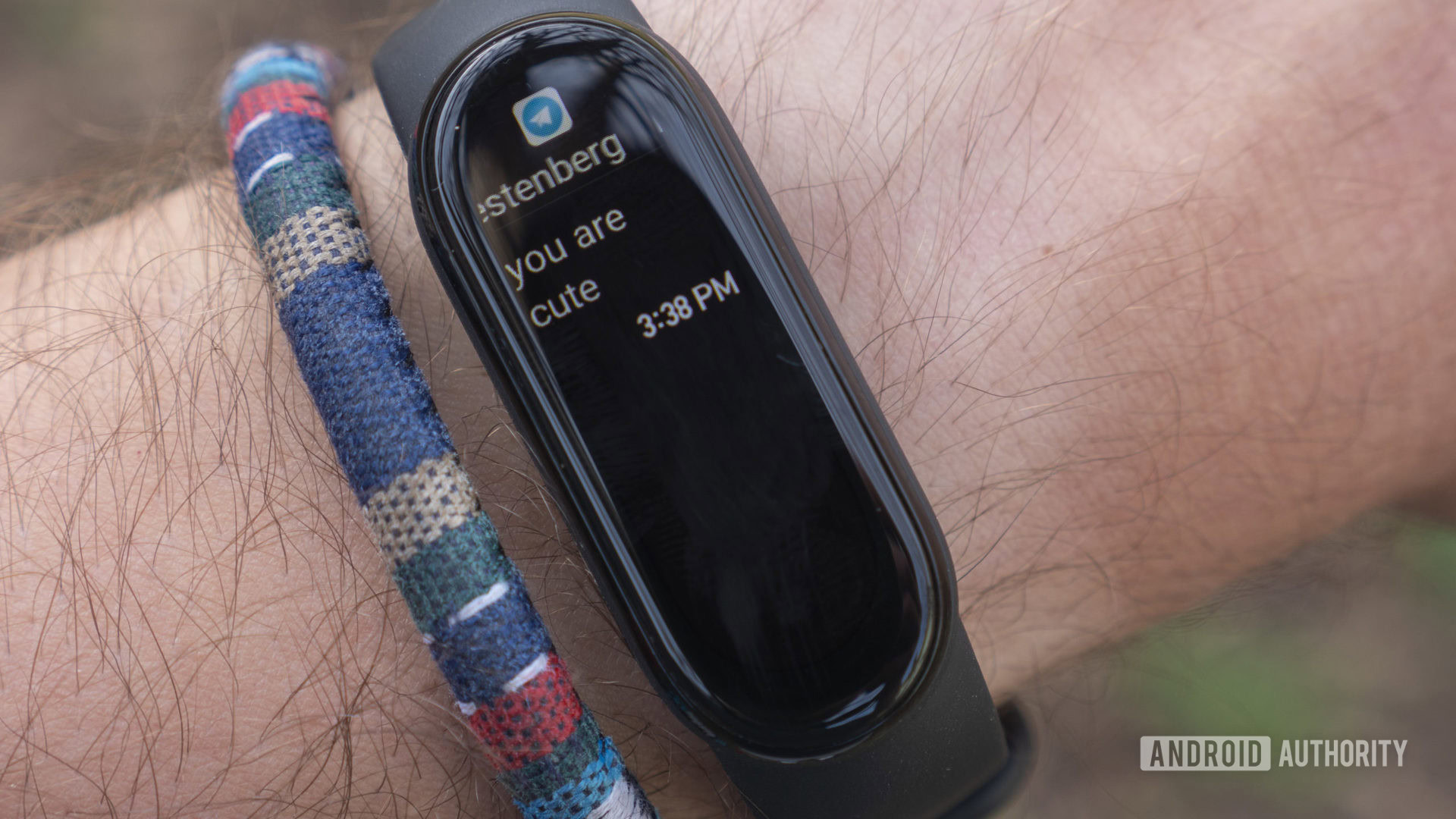
The Xiaomi Mi Band 6 offers basic smartwatch functionality and a few smaller features that aren’t usually found on other fitness trackers. The Mi Band 6 can mirror your smartphone notifications for any app. Notifications aren’t actionable — nor are they particularly easy to read on a display this size — so you’ll likely only glance at that incoming email or text then need to pick up your phone to see the whole thing. If you want an improved notification experience, you’ll want to buy a full-fledged smartwatch.
If you live in China, Xiaomi sells two Mi Band 6 models: one with NFC and a voice assistant, and one without. The global version doesn’t have NFC or a voice assistant, either, so I could not test contactless payments or Xiaomi’s Xiao AI assistant. If you’re after a Mi Band that’s a little smarter, Huami released a Mi Band replica in 2020 that comes with Amazon Alexa.
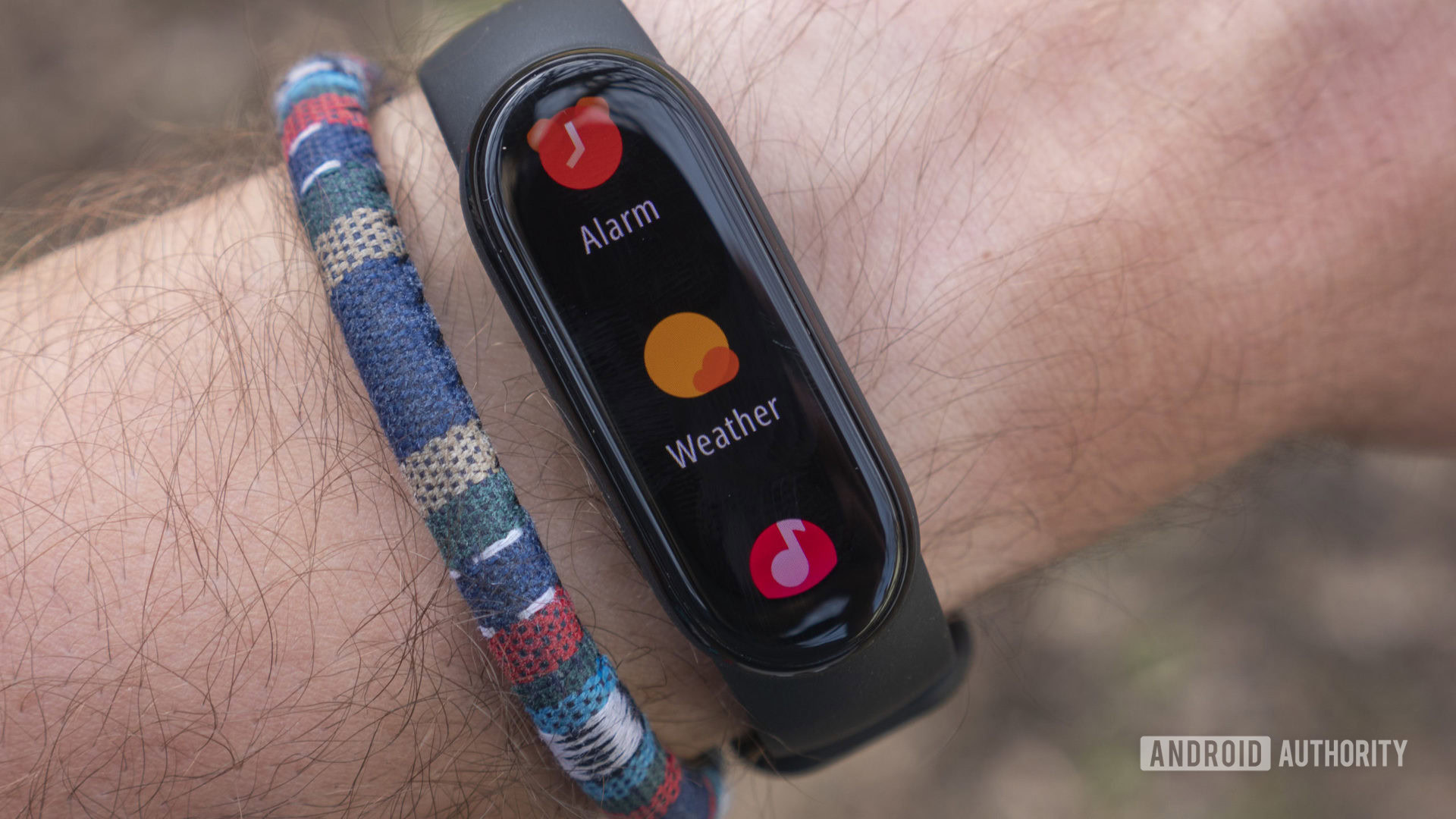
I praised this in my Mi Band 5 review, but it bears repeating: Xiaomi does night mode better than many other companies, including Google with Wear OS. You can set the Mi Band 6’s display to dim on a set schedule or based on when the sun sets. You can also set raise-to-wake functionality to a schedule, so you’re not accidentally triggering it while you’re in bed. It’s a nice touch that really goes a long way.
Finally, the Mi Band 6 has a few basic apps built-in like an alarm, stopwatch, timer, event log, a “find my device” app, and a camera control app. You can also control your smartphone’s music from the Mi Band. That’s where the app list ends, though. There are no third-party apps and no third-party watch faces.
Xiaomi Mi Band 6 specs
| Xiaomi Mi Band 6 | |
|---|---|
Display | 1.56-inch AMOLED Tempered glass with anti-fingerprint coating 152 x 486 resolution 326ppi Up to 450 nits 60+ band displays |
Sensors | PPG heart rate sensor 3-axis accelerometer sensor 3-axis gyroscope sensor SpO2 sensor Connected GPS |
Battery | 125mAh 14-day promised battery life |
Connectivity | Bluetooth 5.0 |
Tracking and other features | 30 fitness modes 6 auto detection modes SpO2 tracking Sleep tracking Breathe exercise Stress monitoring Female health tracking PAI (Personal Activity Intelligence) Idle alerts Camera remote shutter |
Water resistance | 5ATM |
App compatibility | Mi Wear app Mi Fit app |
Charging method | Magnetic charging |
Supported devices | Android 5.0 and above iOS 10 and above |
Dimensions | 47.4 x 18.6 x 12.7mm Strap: 155 - 219mm |
Colors | Black, Orange, Yellow, Olive, Ivory, Blue |
Value and competition


There’s stiff competition in the sub-$50 fitness tracker space, and most of it comes from Xiaomi, Fitbit, and HUAWEI. The Mi Band 6 falls snuggly within this price band, and can often be found on sale considering its age and the availability of newer devices.
Speaking of newer options, the Xiaomi Mi Band 7 ($46 at Amazon) is now official. It brings a larger battery, bigger display, and more fitness and recovery-orientated training features to its software bouquet. It isn’t the big upgrade over the Mi Band 6 many have hoped for, though. Despite its larger capacity, battery life is often worse than the Mi Band 6. You also don’t get any onboard GPS functionality, limiting the Mi Band 7’s training slant. Nevertheless, its pricing makes it an attractive proposition nonetheless.
The Xiaomi Mi Band 8 ($37.82 at AliExpress) is now also official, but we wouldn’t earmark it as a viable Mi Band 6 alternative for everyone just yet. It’s only officially available in China for now and includes new aesthetics and a smartwatch-like strap design as its only major difference over the Mi Band 7.
You also might want to consider the Fitbit Inspire 3 ($99.95 at Amazon) if you’re not tied to the Xiaomi ecosystem. It’s around double the price of the Mi Band line, but does include a free year of Fitbit Premium. Buying from Fitbit also means you’ll get to use the Fitbit app, which is far superior to the Xiaomi Wear app.
If you’re looking for more of a smartwatch form factor, the Xiaomi Smart Band 7 Pro ($89 at Amazon) is worth a mention. It packs an even larger screen and body than the staple Mi Band line but packs baked-in GPS support. However, its battery endurance doesn’t quite match its increased size, and we weren’t entirely convinced by its sleep tracking.
The HUAWEI Band 6 ($54 at Amazon) is an excellent alternative if you’re willing to pay a little more for a tracker with a smartwatch-like AMOLED display. It also packs continuous SpO2 monitoring and solid battery life but falls short in terms of heart rate sensor accuracy.
Xiaomi Mi Band 6 review: The verdict
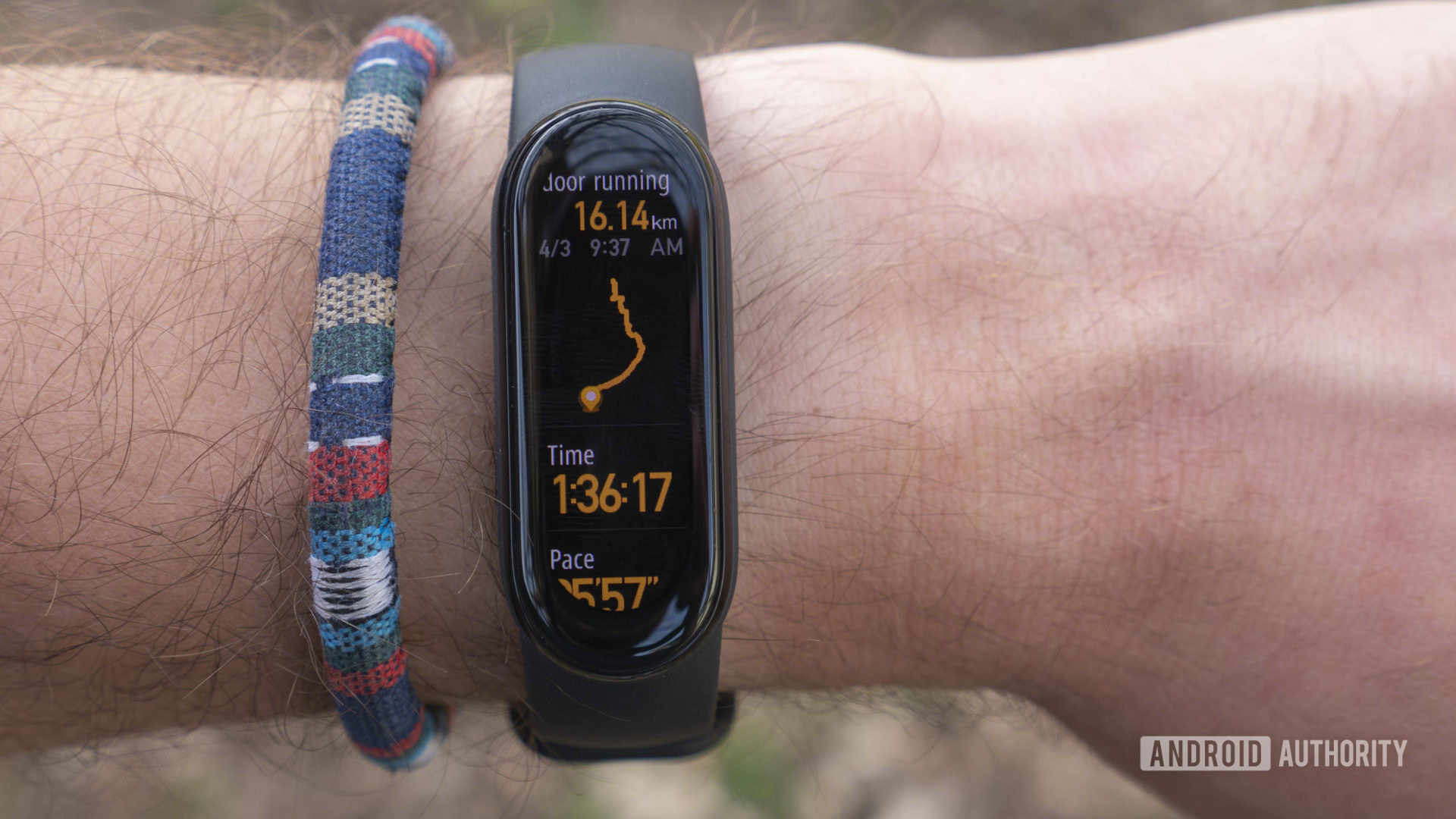
The Xiaomi Mi Band 6 is one of the best cheap fitness trackers you can buy and absolutely worth the $45. It handles the basics well, and that’s what we expect out of a device at this price point.
It’s no longer the only cheap fitness tracker worth considering, though, so you may find yourself deciding between the Mi Band 6 and an Amazfit device. Luckily Xiaomi and Huami’s products are similar in many ways (they collaborate on the Mi Band, after all), so buying one over the other won’t be a huge deal.
Unsurprisingly, the Xiaomi Mi Band 6 is one of the best cheap fitness trackers you can spend your money on.
Xiaomi has delivered a solid fitness tracker that adds modern features like blood oxygen monitoring and a larger AMOLED display. Certain aspects of the device could use some more attention, but overall, the Mi Band 6 is a well-rounded package.
Frequently asked questions
Yes, the easiest way to get the Mi Band 6 in North America is through Amazon.
Yes, the Mi Band 6 offers up to 5 ATM water resistance, which means it can be used for swimming or wearing in the shower.
Yes and no. You will need a phone in order to set up your Mi Band 6, but then it will track your footsteps and sleep without keeping your phone on hand. You’ll need a phone in order to use connected GPS, however.
Yes, the Mi Band 6 offers 24/7 blood pressure measurement, but unfortunately, Xiaomi has not yet added body temperature reading as a feature.
The base version of the Mi Band 6 does not have NFC support, but Xiaomi has since launched a global NFC version.